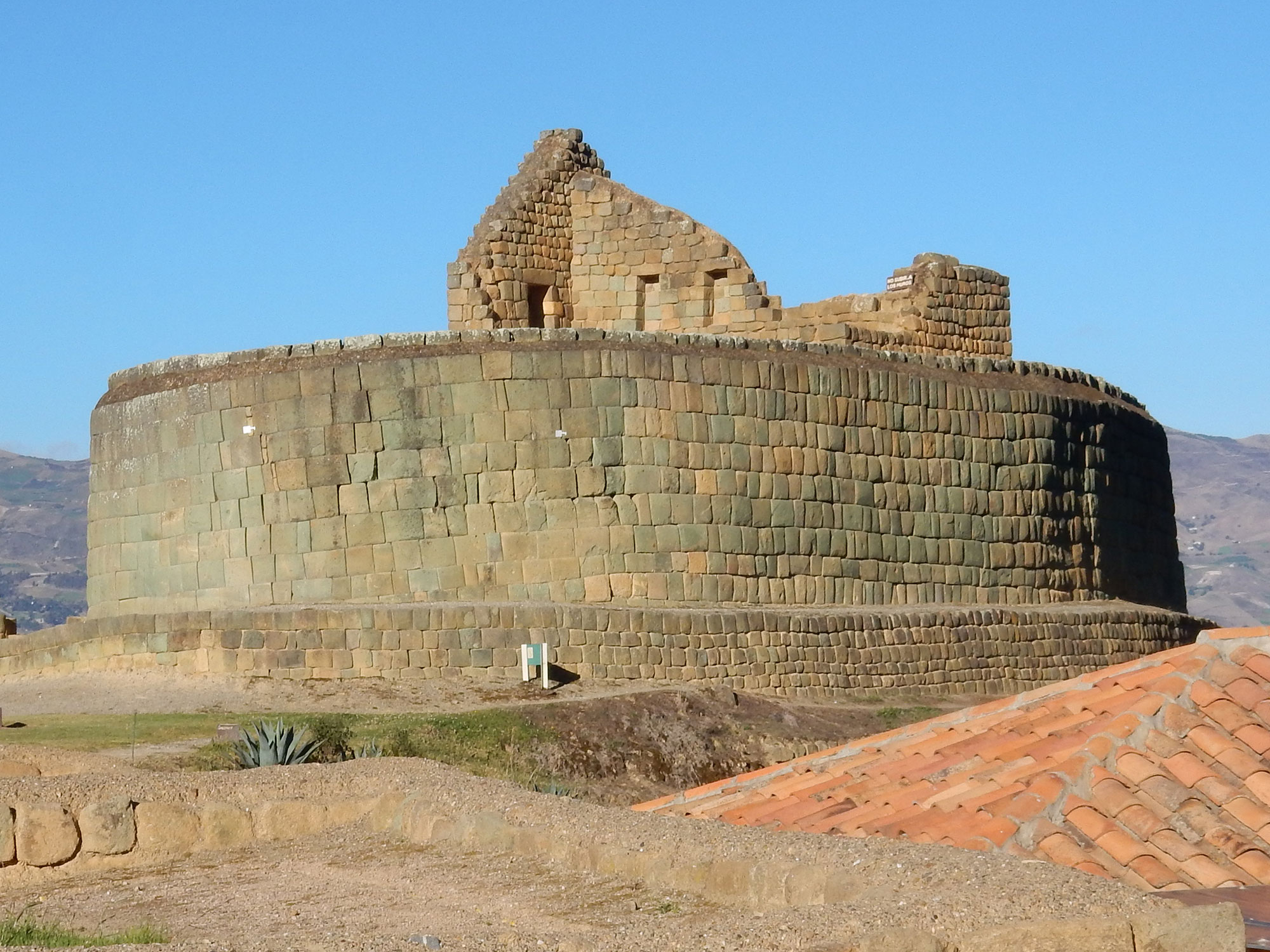

Ingapirca, a UNESCO World Heritage Site, is the largest and most important complex of Inca ruins in Ecuador.
From the Posada de Ingapirca, I walked down the hill to the entrance of the ruins. Down below, I could see the stone walls and the elliptical tower of the Temple of the Sun. The Cañari people lived in this area for millennia, long before the arrival of the Incas and the Spanish. They were the first to initiate the construction of this complex and there is still some mystery surrounding its original purpose. Over the centuries, scholars have debated what the function of this complex was, with at least six different interpretations. It has been identified as a temple, an observatory, a fortress, a residence of Inca royalty, a tambo, and a storehouse for tribute.
Charles Marie de La Condamine and his French expedition visited Ingapirca in 1739 and believed it to be an Inca fortress, designed to protect the northern frontier of the empire. He surveyed the site and developed extensive drawings and maps of the complex of ruins. In his "Report on some ancient monuments of Peru, from the time of the Incas" (1748), he wrote about his first visit to the ruins and how to identify them:
Alexander von Humboldt visited Ingapirca in 1801 during his exploration of South America. He also believed the ruins to be an Inca fortress, because of its strategic hilltop location, above the junction of two rivers. After centuries of studies and archaeological excavations, more recent scholars have come to believe that long before the arrival of the Incas in the late 15th century, the Cañari built this temple as a place of worship, as well as an astronomical observatory.
The Cañari based their belief system on the Moon, worshipping a Moon goddess. What seem like random boulders strewn around the grounds of Ingapirca are actually a sophisticated lunar calendar. On top of the boulders are carved a series of small holes, which could be filled with water at night, providing a view of the constellations overhead. The Cañari astronomical observers were able to analyze the constellations and identify the precise time of year. With this information, they would organize the people's agricultural activities, based on a ten-month cycle of the moon.
Late in the 15th century, the Incas began to expand their empire in all directions, some of them moving northward from Peru into present-day Ecuador. Many of the local indigenous groups were easily conquered, but the Cañari did not give up without a fight. There were decades of conflict between the Incas and the Cañari, right up until the time of the Spanish arrival in the early 16th century.
The Incas took over the temple at Ingapirca, expanding it and converting it for their own religious purposes. The Incas based their belief system on the Sun, so the center of the complex became the grand elliptical Temple of the Sun. They created their own astronomical calendar by building a series of trapezoidal niches in the walls that were designed to catch the sun on the solstices and equinoxes.
I could tell that I was entering a magical place.